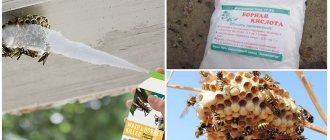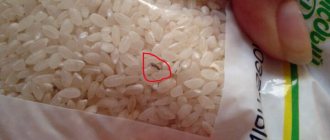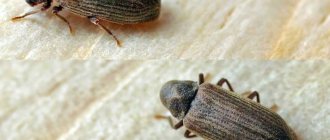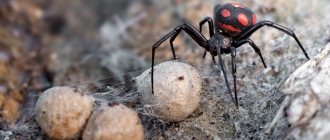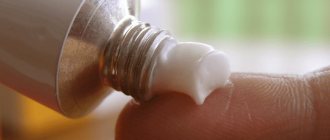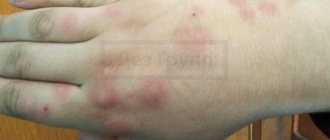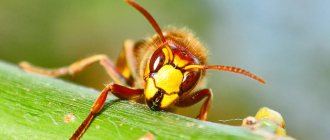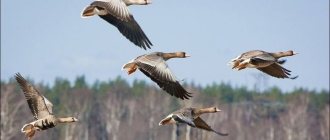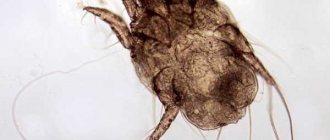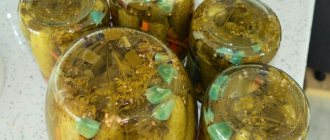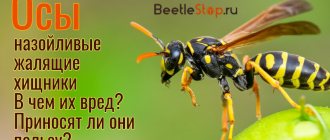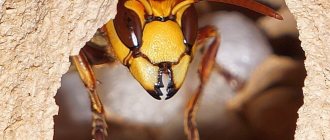December 7, 2021
We've thought of everything: the perfect couple of days in Almaty
Read November 26, 2021
I'm in Almaty, and you?
Read November 18, 2021
More please: how to save money when traveling
Read November 16, 2021
Russia resumes flights with five countries it almost never flew to before
Read November 11, 2021
The authorities want to introduce QR codes for traveling around Russia. How will it work?
Read November 8, 2021
How to have fun in Goa
Read
Paper wasps. You've probably seen their hives, which look like they were made of tissue paper, at your grandmother's in the village or on your balcony. Let's talk about how to deal with them.
What are they?
Only representatives of the group of so-called “paper wasps” sting us. These include more than 1000 different species living on the globe, including those common in Russia: the common wasp, the German wasp and the hornet. The first two are very similar to each other both in size and in black and yellow striped pattern, only the German wasp gravitates toward city life, while the common wasp prefers the countryside.
The hornet is the largest and most dangerous wasp, its “sting” is the most painful, but, fortunately, hornets are much less common.
Hornet. Photo: Shutterstock.com/ Maciej Olszewski
If wasps settled at home
Wasps prefer country life: they make nests in barns, bathhouses and attics. But sometimes you can find them in a city apartment on the balcony, especially if it is not glazed.
If the nest is large and you are afraid of wasps, then do not play hero: call exterminators and they will destroy the insects. This is the safest option - only the price can bite you: the price starts on average from two thousand rubles per trip, but depends on the size of the nest, their location and quantity, as well as the distance from the city.
If the price of specialist services is too painful, or you are determined to deal with wasps yourself, then here are some brief instructions:
- The operation is carried out in the dark, when it is cool outside. The ideal time of year to remove a nest is spring or autumn: when wasps are returning from hibernation or preparing for it. In winter, the nests are empty: the swarms sleep in tree hollows, and the “summer apartments” are left empty. If you find an empty nest in winter, simply tear it off and throw it away, and thoroughly clean the attachment site with detergent.
- Protect yourself from bites: put on thick pants and a jacket, mittens or work gloves on your hands, cover your head with a mosquito net, and protect your respiratory system with a respirator.
- Spray the nest with an insecticide in an aerosol. This could be Moskitol, Dichlorvos or another suitable product labeled “for wasps”.
- Place a tight bag without holes over the nest and carefully cut it from the base with a long knife. Tie the bag tightly.
- Place the bag in a bucket of water or burn it. If you are a supporter of humane methods, then take the package with the nest to a deserted place where people will not stumble upon it.
- Do not smoke the nest under any circumstances - the strong smell will only anger the wasps.
- Clean the place where the nest is attached from its remains and wash with a cleaning agent or soap solution, otherwise the wasps will return to the same place next year.
How to build a house?
In the spring, an overwintered female wasp wakes up (which the males fertilized in the fall) and, having found a suitable place, begins to build her own, still very small, paper nest. Having laid an egg in each cell, the mother wasp carefully looks after the larvae and feeds them until they pupate and the first worker helper wasps appear. All of them are the older sisters of the hornet's nest, who now take full responsibility for the care of subsequent offspring, since their mother (queen) will only lay eggs from now on. All worker wasps are female, and the sting is nothing more than a slightly modified ovipositor. The family begins to grow, and more and more workers emerge from the pupae. This is why paper wasps are also called social wasps. Now it becomes clear to you why the end of summer is the time for the most massive flight of wasps, because by this time all members of the wasp family reach the final stage of development (called imago).
Meanwhile, more and more wasps hatching from the larvae join the family concerns: some fly away in different directions in search of food, others expand the nest. Around the first small ball, a second, larger one appears, then a third, fourth, fifth... And only the autumn cold stops construction work.
Question answer
What should you do if your leg is very swollen after a bee sting?
Features of OS behavior
Wasps are very similar to their relatives - bees. They are also covered with black and yellow stripes and have two pairs of wings. However, in nature there are many different types of wasps, whose coloring sometimes varies from brownish-black to bright red or yellow. These insects are widely known not so much because of their “wasp” waist, but because of their very painful and dangerous bites. Like a bee, a wasp painfully bites its opponent, but does not lose its sting. This insect is very often aggressive. Therefore, if danger approaches, it will attack first.
Wasps become most aggressive during the period when there is a lot of food around, especially sweet fruits. In addition, heat greatly affects their increased arousal. And at the end of summer and beginning of autumn, not only the “viciousness” of wasps increases, but also their number. Therefore, on such days you need to be extremely careful so as not to feel the consequences of dangerous bites.
What do they eat?
Social wasps (unlike those living alone and, as a rule, hunting) are vegetarians and feed exclusively on liquid food: sweet nectar or plant juice, which is why they are so drawn to your jam and sweet compotes. But their larvae are fed protein foods, for which they catch various insects and do not even disdain carrion. Therefore, do not be surprised by wasps gnawing off a piece of fish or meat on your table. The larvae are very voracious: as soon as they begin to feel hungry, they immediately scratch loudly with their jaws on the paper walls of the wasp house; This is a signal - “I want to eat”! Caring sisters immediately rush to satisfy the hunger of the younger generation. Their relationship with ants is interesting. Sometimes real wars break out between different types of insects, with the result that the winner takes the prey.
Germanic wasp. Photo: Shutterstock.com/ Melinda Fawver
Rescue from wasps and bees - escape
If suddenly you accidentally disturb a wasp's nest and the insects attack, you should retreat as soon as possible. “When attacking, social insects chemically transmit alarm signals to their airborne counterparts, so the first bite may be followed by a second, and a third, and so on. You need to run away decisively, preferably indoors, but if this is not possible, then from an open, illuminated place to a shady place. If possible, it is better to throw a blanket or film that you have on hand as quickly as possible, especially on your head. As a rule, when insects are convinced that the enemy is far enough from the nest, they stop pursuing. I think that they will not pursue more than 100 m. “Any person can run a hundred meters,” says the entomologist.
“As a rule, in nature people do not disturb wasps and bumblebees. This happened before, when cattle grazing or manual haymaking took place everywhere. There were many more clashes between stinging insects and people back then. Now almost all incidents occur in populated areas. The cities are full of fruit-bearing trees and there is plenty of food for wasps. So most of the victims of wasps are city residents,” he added.
Why do they sting?
First of all, defending against the enemy or defending your nest. Unlike a bee, a wasp stings repeatedly. Its poison is not only a strong allergen that causes a reaction (from swelling to death), but also an attack pheromone. The smell of the very first dose used acts like a war bugle - a signal to attack for the whole family. That's why you need to be careful around the nest itself.
The risk of aggression increases many times over:
- the smell of perfume (“sweet” perfume or cologne) and makeup (it contains cosmetic fragrances);
- bright clothes;
- sudden movements of people, which are perceived as an attempt to harm the nest;
- a fear hormone that insects also sense and become even more irritated.
By the way
Make sure that wasps do not get into food or drink - desserts or compotes. A swallowed insect can sting a person in the mouth or esophagus, sometimes leading to suffocation.
Consequences of a wasp sting: what is the danger?
Reactions to a wasp sting vary from person to person, ranging from painful sensations at the site of the sting to severe allergic reactions and death. About 1-2% of people develop complications that are fatal . Most often this occurs as a result of suffocation, which in turn occurs when wasps sting in the area of the face, head and neck. Bites to these areas of the body are most dangerous to human life and health.
The most initial manifestations after a sting:
- sharp pain
- burning,
- redness,
- edema.
Such symptoms may subside within a few hours. In this case, there is no reason to worry. At the same time, to relieve symptoms, you can additionally use creams against insect bites, apply ice or chilled objects. All this will help alleviate pain, remove redness and itching.
However, things don't always work out so well. If the swelling only intensifies over time, and the itching spreads throughout the body, then you need to sound the alarm : an allergic reaction is developing. Associated signs of so-called anaphylactic shock are as follows:
- Irregular (increased or slow) heartbeat.
- Labored breathing.
- Hoarseness of voice, hoarseness.
- Headaches, dizziness, loss of consciousness.
- Attacks of nausea and vomiting.
If such symptoms appear, an urgent call to the ambulance is mandatory!
First aid for a bite:
- take an antihistamine;
- if the sting remains in the skin, be sure to remove it; Before this procedure, disinfect the instrument and wash your hands thoroughly;
- treat the bite site with an acidic solution - vinegar or lemon juice, since the acid neutralizes wasp venom;
- after treatment with acid, use an antiseptic so that when combing the wound it does not get infected;
- apply something cold to the sore spot - low temperature will reduce pain and swelling;
- Do not drink alcohol - it will only worsen the condition.
Don't let yourself get bitten. How dangerous are mosquitoes and how to get rid of them? More details
What to do depending on the location of the bite?
A wasp can sting any part of the body. First aid will vary slightly depending on where the affected area is:
- the wasp has bitten the lip or tongue - the victim should take an antihistamine, you can let him suck on ice;
- if a wasp stings your eye, you should apply a napkin moistened with cold water, but it is better not to use ice, so as not to chill the facial nerve;
- If you are bitten on the neck, you should immediately take an antihistamine.
The most dangerous are wasp bites to the eye, neck, and tongue. In this case, you should immediately consult a doctor.
How to treat the affected area
In case of severe itching, you can apply grated raw potatoes to the wound. – Fresh celery juice mixed with a little wine vinegar will help relieve itching. – You can use compresses made from pharmaceutical alcohol or pure distillate. – Apply the cut onion and leave for 15 minutes. This vegetable will secrete juice, which, penetrating into the irritated area, will relieve swelling and itching. – Calendula essential oil has a calming effect. – Lemon juice helps eliminate swelling. – The wound can be treated with a banana. To do this, you need to steam it, peel it and cool it. Then mash with a fork until it becomes a thick jelly and rub the bite area with it. – Apply a handkerchief soaked in vinegar for half an hour.
How to protect your home from wasps
Wasps and hornets are attracted to sweets, open food, and strong-smelling perfumes, so you should definitely install mosquito nets on your windows. Do not leave sweets, pies or sugar on the table or nightstands. You can also put a mesh on all cracks and ventilation shafts. The smell of vinegar and the drug “SOCHVA” with the smell of smoke repels insects. Wasps will fly around the windows if the curtains on them are sprayed with a solution of food vinegar. After half an hour, a person will no longer feel the smell, and insects have a keen sense of smell, vinegar will definitely scare them away.
If wasps have already settled in the neighborhood, then it’s time to act more harshly.
Why do you dream about wasp stings?
Some people see how a wasp bites not only in reality, but also in dreams. Many dream books interpret differently the meaning of dreams in which these aggressive insects are present.
Most often, a wasp seen in a dream indicates the presence of an ill-wisher in a person’s close circle, who will certainly try to “sting” him.
If you see biting wasps in a dream, then the possible meanings may be as follows. Hasse's Dream Book warns of unexpected separation from loved ones, the Housewife's Dream Book warns of a sudden attack, and the Esoteric Dream Book warns of unexpected complications.
Any of the proposed interpretations explains quite simply and clearly what the dream is about. Wasps bite in a dream - this is definitely not good. However, there are other options. For example, if in a dream a person kills a wasp, then in real life he will face victory over his enemies.
How to help at home?
If there are no medicines at hand, folk remedies that can be found in every home can help. By the way, natural remedies will also come in handy if a wasp has bitten a pregnant woman, for whom the list of approved medications is very limited. More often than others, the following are used to treat the bite site:
- aloe juice or pulp;
- a slurry of soda mixed with water;
- sour fruit (lemon, sour blocks);
- diluted apple cider vinegar;
- tomato pulp (both ripe and green);
- grated fresh potatoes.
Grated potatoes
Some housewives advise adding chopped onion or garlic, but the juice of these plants is very caustic, so the method is not suitable for everyone. In particular, such lotions are not recommended for treating wasp stings during pregnancy
What a wasp looks like - photo
There are about twenty thousand species of wasps all over the world, differing in color, body shape, type of housing construction, size and degree of aggressiveness. In addition to being aggressive stinging insects, wasps are known for the distinctive construction of their nests, which look like paper jugs. It should be noted that the types of nests are quite different. For example, there are open nests, with honeycombs, and there are closed ones. Some Hymenoptera prefer to build nests in hollow walls and other inaccessible places. It is in such cases that we can say that there are wasps, but where they are flying from is unknown.
A wasp nest can be found in a barn or garage.
Wasps can also take shelter under the roof of a house, on a tree, in the corners of terraces and other similar secluded places. Sometimes the nest consists of honeycombs fastened together.
The body of the average wasp (16-21 mm) is black, with a yellow pattern on the head and chest.
Common wasps nest in the ground, for example in burrows abandoned by rodents. They are even able to expand their home to a significant size, so that more than one thousand individuals can live in it. Their length is 13-19 mm.
Below you can see a closed wasp nest in the ground, which was apparently destroyed by a forest animal.
Hornets prefer to live in hollow trees, in birdhouses, under roofs and in the ground. Hornets are much larger than wasps; working individuals have a body 22 mm long, and females up to 35 mm. Their color is brownish with a yellow pattern on the head and abdomen, the tint of the wings is yellowish.
Wasps in a house or country house are found on the surface of old buildings and fences, where they scrape off wood, which they use to build nests.
Hornets love tree bark.
When building a nest, the female first creates a cell in which she lays eggs; it turns out that along the edges of the nest there are cells in which one egg lies.
Wasps feed on meat, insects, fish, berries and tree fruits. They chew off pieces of food and feed them to the larvae.
Having gotten to know wasps better, it becomes clear that they should be quite comfortable in nature. Then why do they fly into houses and apartments?
